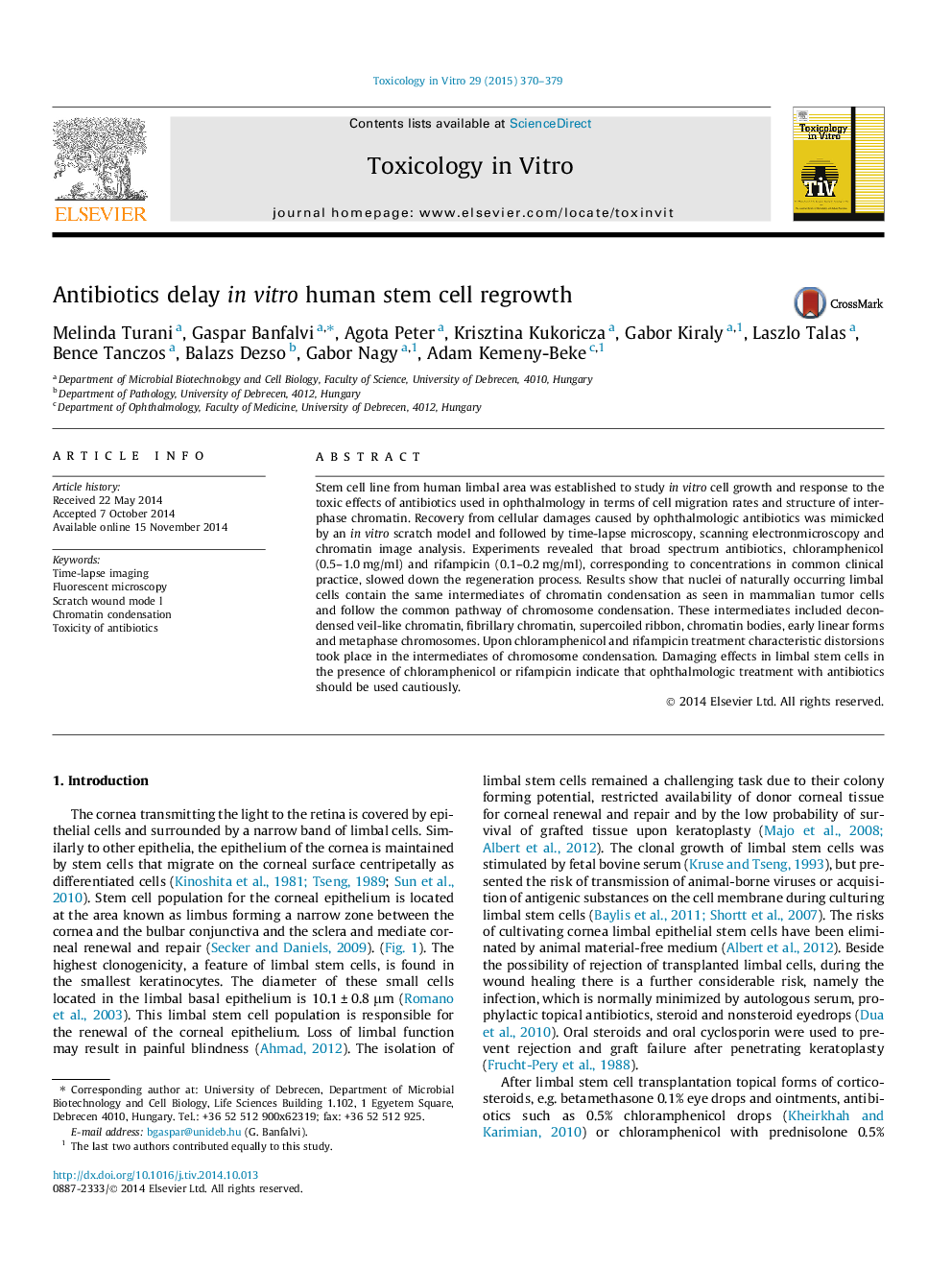| Article ID | Journal | Published Year | Pages | File Type |
|---|---|---|---|---|
| 2602470 | Toxicology in Vitro | 2015 | 10 Pages |
•An in vitro cell regeneration model was established.•Antibiotics delayed in vitro stem cell regeneration.•Electronmicroscopy confirmed regeneration.•Stem cells contain common intermediates of chromatin condensation.•Antibiotics cause distortions in chromatin structure.
Stem cell line from human limbal area was established to study in vitro cell growth and response to the toxic effects of antibiotics used in ophthalmology in terms of cell migration rates and structure of interphase chromatin. Recovery from cellular damages caused by ophthalmologic antibiotics was mimicked by an in vitro scratch model and followed by time-lapse microscopy, scanning electronmicroscopy and chromatin image analysis. Experiments revealed that broad spectrum antibiotics, chloramphenicol (0.5–1.0 mg/ml) and rifampicin (0.1–0.2 mg/ml), corresponding to concentrations in common clinical practice, slowed down the regeneration process. Results show that nuclei of naturally occurring limbal cells contain the same intermediates of chromatin condensation as seen in mammalian tumor cells and follow the common pathway of chromosome condensation. These intermediates included decondensed veil-like chromatin, fibrillary chromatin, supercoiled ribbon, chromatin bodies, early linear forms and metaphase chromosomes. Upon chloramphenicol and rifampicin treatment characteristic distorsions took place in the intermediates of chromosome condensation. Damaging effects in limbal stem cells in the presence of chloramphenicol or rifampicin indicate that ophthalmologic treatment with antibiotics should be used cautiously.
Graphical abstractCharacteristic regeneration of monolayer surface upon antibiotic treatment of limbal stem cells as a function of time. A. Control scratch model to mimic the regeneration of stem cell monolayer. B. Regeneration of monolayer after treatment with 0.5 mg/ml chloramphenicol. C. Regeneration of scratched monolayer upon treatment with 0.1 mg/ml rifampicin. Lower panels: oscillations in growth rate indicating cellular surface motion changes.Figure optionsDownload full-size imageDownload as PowerPoint slide
